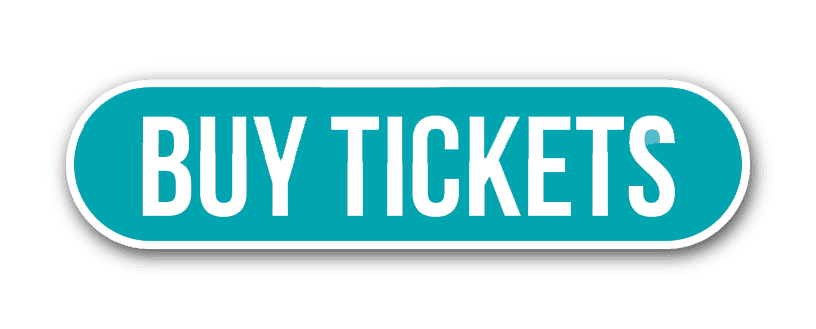Have you ever wondered what drugs are considered Schedule 2 and what implications they hold? The classification of drugs under various schedules by the Drug Enforcement Administration (DEA) is crucial in understanding their legal and medical significance. In this blog, we delve into the world of Schedule 2 drugs, shedding light on their categorization, potential risks, legal restrictions, and medical uses. Whether you are a healthcare professional, a patient, or simply curious about drug regulations, gaining insights into Schedule 2 drugs is essential. Join us as we unveil important information about these substances and explore why they are closely monitored and controlled.
Introduction to Schedule 2 Drugs
Schedule 2 drugs, often referred to as controlled substances, are medications or substances with a high potential for abuse and severe psychological or physical dependence. These drugs are closely monitored and regulated by the Drug Enforcement Administration (DEA) in the United States. It is crucial to understand the classification and regulations surrounding schedule 2 drugs to promote safe and responsible use.
Classification of Schedule 2 Drugs
Schedule 2 drugs include substances such as certain opioids, stimulants, and depressants. These drugs have recognized medical uses but are also at a high risk of misuse and addiction.
Common examples of schedule 2 drugs include Oxycodone, Methadone, and Adderall.
Regulations and Restrictions
Schedule 2 drugs are tightly controlled due to their potential for abuse. They require a written prescription from a healthcare provider, and refills are generally not allowed to prevent misuse.
- Patients must adhere to strict guidelines when using schedule 2 drugs to avoid dependence and addiction.
- Regular monitoring and communication with healthcare professionals are essential to ensure safe usage.

Understanding the Classification
When it comes to scheduling drugs, it is essential to comprehend the criteria that determine where a substance falls within the classification system. In the United States, drug scheduling is handled by the Drug Enforcement Administration (DEA). Substances are categorized into different schedules based on their potential for abuse, medical use, and safety concerns.
Criteria for Schedule 2 Drugs
Schedule 2 drugs are substances with a high potential for abuse, have medical uses, but also pose severe safety concerns. These drugs may lead to severe psychological or physical dependence. Common examples of Schedule 2 drugs include opioid painkillers like oxycodone and stimulants like Adderall and Ritalin.
Regulations and Legal Implications
Being aware of the classification of drugs is crucial for healthcare professionals, law enforcement agencies, and individuals prescribed such medications. Understanding the legal ramifications of possessing or distributing Schedule 2 drugs is vital to prevent abuse and ensure compliance with the law. Violations related to controlled substances can lead to severe penalties and criminal charges.
Examples of Schedule 2 Drugs
Schedule 2 drugs are substances with a high potential for abuse but also have accepted medical uses. These drugs are tightly regulated due to their potential for addiction and misuse. Some examples of Schedule 2 drugs include:
Opioids
Opioids are potent pain relievers that can lead to physical dependence and addiction. What drugs are schedule 2
- Oxycodone
- Morphine
- Fentanyl
Stimulants
Stimulants are substances that increase alertness, attention, and energy. These drugs are often misused for their euphoric effects.
- Amphetamine
- Methylphenidate
- Cocaine
Regulations and Restrictions
Understanding **what drugs are Schedule 2** is crucial as it impacts their regulation and availability. Schedule 2 drugs are substances with a high potential for abuse but with accepted medical uses. They are regulated by the Drug Enforcement Administration (DEA) in the United States.
DEA Classification
Schedule 2 drugs include opioids like **oxycodone** and **fentanyl**. These medications are prescribed for severe pain but come with strict regulations due to their addictive properties.
Doctors must issue handwritten prescriptions for Schedule 2 drugs, and refills are generally not allowed, ensuring close monitoring of their use.
Restrictions on Dispensing
Pharmacists must follow stringent guidelines when dispensing Schedule 2 drugs. They need to verify the prescription’s authenticity and ensure it meets all legal requirements to prevent misuse.
- Patients may need to show identification when picking up Schedule 2 medications.
- Pharmacists must maintain detailed records of dispensing Schedule 2 drugs for regulatory purposes.
Health Risks and Effects
Schedule 2 drugs can pose significant health risks and have various effects on individuals. These substances, classified as having a high potential for abuse and leading to severe psychological or physical dependence, demand careful handling and awareness to prevent adverse outcomes.
Impact on Physical Health
Excessive consumption of schedule 2 drugs can result in serious physical health issues. Cardiovascular problems are a common concern, as these drugs may elevate heart rate and blood pressure, leading to potential heart complications.
Psychological Effects
These drugs can also have profound effects on one’s mental state, causing severe mood swings and impacting cognitive function. Users may experience hallucinations and paranoia, leading to altered perceptions and behaviors.
- Heightened anxiety levels
- Depression and mood disorders
- Increased risk of addiction
Legal Consequences
Understanding the legal consequences of Schedule 2 drugs is crucial for anyone involved in the use or distribution of these substances. In the United States, Schedule 2 drugs are considered to have a high potential for abuse and severe dependence, but they also have accepted medical uses with severe restrictions.
Penalties for Possession
Individuals caught with Schedule 2 substances without a valid prescription may face serious legal repercussions. Penalties can vary depending on the amount in possession, but can include heavy fines, probation, and even imprisonment.
Consequences for Distribution
Distributing Schedule 2 drugs without proper authorization can lead to harsh penalties, including lengthy prison sentences. Law enforcement agencies actively monitor the distribution networks of these substances, making it crucial to understand the risks involved.
Gateway to Addiction
Schedule 2 drugs have become a gateway to addiction for many individuals, leading to severe health and social consequences. These substances, classified based on their potential for abuse and dependency, pose a significant risk to public health.
What Makes Drugs Schedule 2?
Schedule 2 drugs are defined by their high potential for abuse with severe psychological or physical dependence. These substances can include opioids like oxycodone, stimulants such as Adderall, and depressants like Xanax.
Individuals often start using these drugs for legitimate medical reasons but can quickly spiral into addiction due to their powerful effects on the brain.
The Impact on Society
As the misuse of schedule 2 drugs continues to rise, communities face a growing crisis of addiction, overdoses, and related fatalities. The societal burden of addiction includes strained healthcare systems, increased crime rates, and fractured families.
- Over the past year, there has been a noticeable uptick in the misuse of prescription stimulants among young adults.
- In 2021, opioid-related overdoses reached an all-time high, highlighting the urgent need for comprehensive intervention strategies.
Frequently Asked Questions
- What are Schedule 2 drugs?
- Schedule 2 drugs are substances that have a high potential for abuse, but also have accepted medical uses. These drugs are considered dangerous and can lead to severe psychological or physical dependence.
- What are some examples of Schedule 2 drugs?
- Common examples of Schedule 2 drugs include opioids like oxycodone and morphine, stimulants like Adderall and Ritalin, and certain depressants like secobarbital.
- How are Schedule 2 drugs regulated?
- Schedule 2 drugs are regulated by the Drug Enforcement Administration (DEA) in the United States. These drugs have restrictions on their production, distribution, and use to prevent abuse and diversion.
- What is the difference between Schedule 2 and other drug schedules?
- Schedule 2 drugs have a higher potential for abuse compared to drugs in lower schedules, such as Schedule 3 or 4. The regulations and penalties for possession and distribution of Schedule 2 drugs are more stringent.
- Can Schedule 2 drugs be prescribed by doctors?
- Yes, Schedule 2 drugs can be prescribed by doctors for legitimate medical purposes. However, the prescription and use of these drugs are closely monitored to prevent misuse and diversion.
Final Thoughts
In conclusion, understanding which drugs are classified as Schedule 2 is crucial for both healthcare professionals and the general public. These drugs, including opioids like oxycodone and stimulants like Adderall, pose significant risks due to their high potential for abuse and dependency. By being aware of their classification, individuals can be more cautious when using them and healthcare providers can better monitor their patients for potential misuse. It is important to always follow the prescribed guidelines and seek help if struggling with any substance abuse issues. Stay informed, stay safe, and together we can combat the challenges associated with Schedule 2 drugs.
In conclusion, understanding which drugs are classified as Schedule 2 is crucial for both healthcare professionals and the general public. These drugs, including opioids like oxycodone and stimulants like Adderall, pose significant risks due to their high potential for abuse and dependency. By being aware of their classification, individuals can be more cautious when using them and healthcare providers can better monitor their patients for potential misuse. It is important to always follow the prescribed guidelines and seek help if struggling with any substance abuse issues. Stay informed, stay safe, and together we can combat the challenges associated with Schedule 2 drugs.
